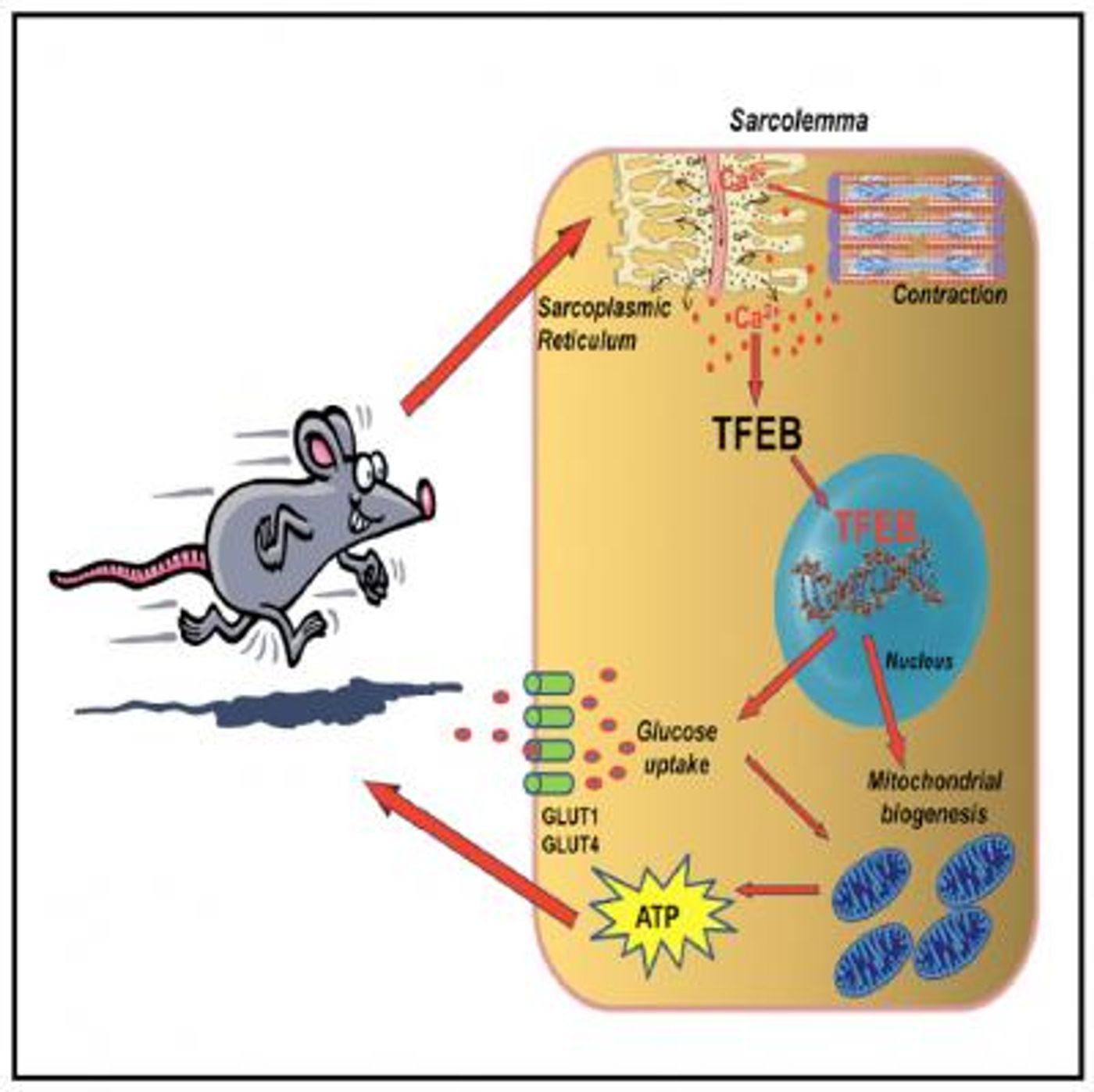TFEB Gene Regulates Muscle Cell Activity During Exercise
Scientists are always striving to know more about the physiology of exercise, especially as health conditions related to obesity become an ever greater threat to public health around the world. Researchers at Baylor College of Medicine working in collaboration with investigators from the Telethon Institute of Genetics and Medicine in Naples, Italy and other institutions have learned that a certain gene called TFEB has a major role in the control of muscle function during exercise. They found that exercise drives the TFEB gene into the nucleus of muscle cells, and there it governs the molecular cascades that feed energy to the muscle by exerting an effect on chemicals like insulin, molecules involved in glucose regulation, and the action of the mitochondria. This research could potentially aid in the development of therapeutics for disorders like obesity, metabolic disease and diabetes.
The investigators involved in this work have previously learned that the TFEB gene has a role in the regulation of the cellular response to starvation. Their new research, published in Cell Metabolism, indicates another role for the gene. TFEB is a molecule that works to control the expression of other genes - a transcription factor.
"In this study we found that TFEB controls the response of the body to physical exercise," said co-senior author Dr. Andrea Ballabio, a Professor of Molecular and Human Genetics at Baylor and Director of the Telethon Institute of Genetics and Medicine. "TFEB plays a central role by regulating the expression of genes that allow muscle cells to use energy."
A mouse model was utilized in order to learn more about the action of TFEB. The ablation of the TFEB gene in mice caused the affected mice to experience difficulty when exercising; they could not keep it up. Looking at why that was happening, the investigators looked at the muscle cells of the mice and saw that the mitochondria did not look right and were not functioning properly. Muscle cells were not getting the right amount of energy to perform normally.
When the researchers did the opposite in mice and caused the TFEB gene to express more than they normally would, the muscle cells contained normal mitochondria, which showed an increase in the amount of energy being produced. These were surprising findings for them. "TFEB had not been associated with how cells use energy before," Ballabio explained.
"This work is the product of a very fruitful international collaboration among researchers in laboratories in Italy, the UK, China and the U.S.," commented Ballabio. "Our discovery of a central pathway that regulates muscle metabolism, use of glucose and mitochondrial function may have important implications in the study of diseases such as obesity and diabetes, as well as in a number of diseases in which muscle function is compromised."
The researchers would now like to find drugs that could exert an effect on this pathway, and may thus help to identify novel strategies for the treatment of various metabolic diseases.
The video above contains an interview with Andrea Ballabio, winner of the 2016 Louis-Jeantet Prize for Medicine.
Sources: AAAS/Eurekalert! via Baylor College of Medicine, Cell Metabolism









